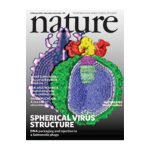Dose-reduced busulfan, cyclophosphamide, and autologous stem cell transplantation for human immunodeficiency virus-associated lymphoma: AIDS Malignancy Consortium study 020.
Shen H, Cheng T, Olszak I, Garcia-Zepeda E, Lu Z, Herrmann S, Fallon R, Luster AD, Scadden DT.
Abstract
The chemokine stroma-derived factor (SDF)-1, and its receptor, CXCR-4, have been shown to be essential for the translocation of hemopoietic stem cells from the fetal liver to the bone marrow (BM). We hypothesized that if CXCR-4 plays a crucial role in the localization of human hemopoiesis, stem cells from distinct tissue sources should demonstrate distinct CXCR-4 expression or signaling profiles. CD34(+) cells from BM were compared with blood: either mobilized peripheral blood or umbilical cord blood. Unexpectedly, significantly higher levels of CXCR-4 surface expression on CD34(+) cells from blood sources, mobilized peripheral blood, or cord blood were observed compared with BM (p = 0.0005 and p = 0.002, respectively). However, despite lower levels of CXCR-4, responsiveness of the cells to SDF-1 as measured by either calcium flux or transmigration was proportionally greatest in cells derived from BM. Further, internalization of CXCR-4 in response to ligand, associated with receptor desensitization, was significantly lower on BM-derived cells. Therefore, preserved chemokine receptor signaling was highly associated with marrow rather than blood localization. To test the functional effects of perturbing CXCR-4 signaling, adult mice were exposed to the methionine-SDF-1beta analog that induces prolonged down-regulation/desensitization of CXCR-4 and observed mobilization of Lin(-), Sca-1(+), Thy-1(low), and c-kit(+) hemopoietic progenitor cells to the peripheral blood with a >30-fold increase compared with PBS control (p = 0.0007 day 1 and p = 0.004 day 2). These data demonstrate that CXCR-4 expression and function can be dissociated in progenitor cells and that desensitization of CXCR-4 induces stem cell entry into the circulation.





